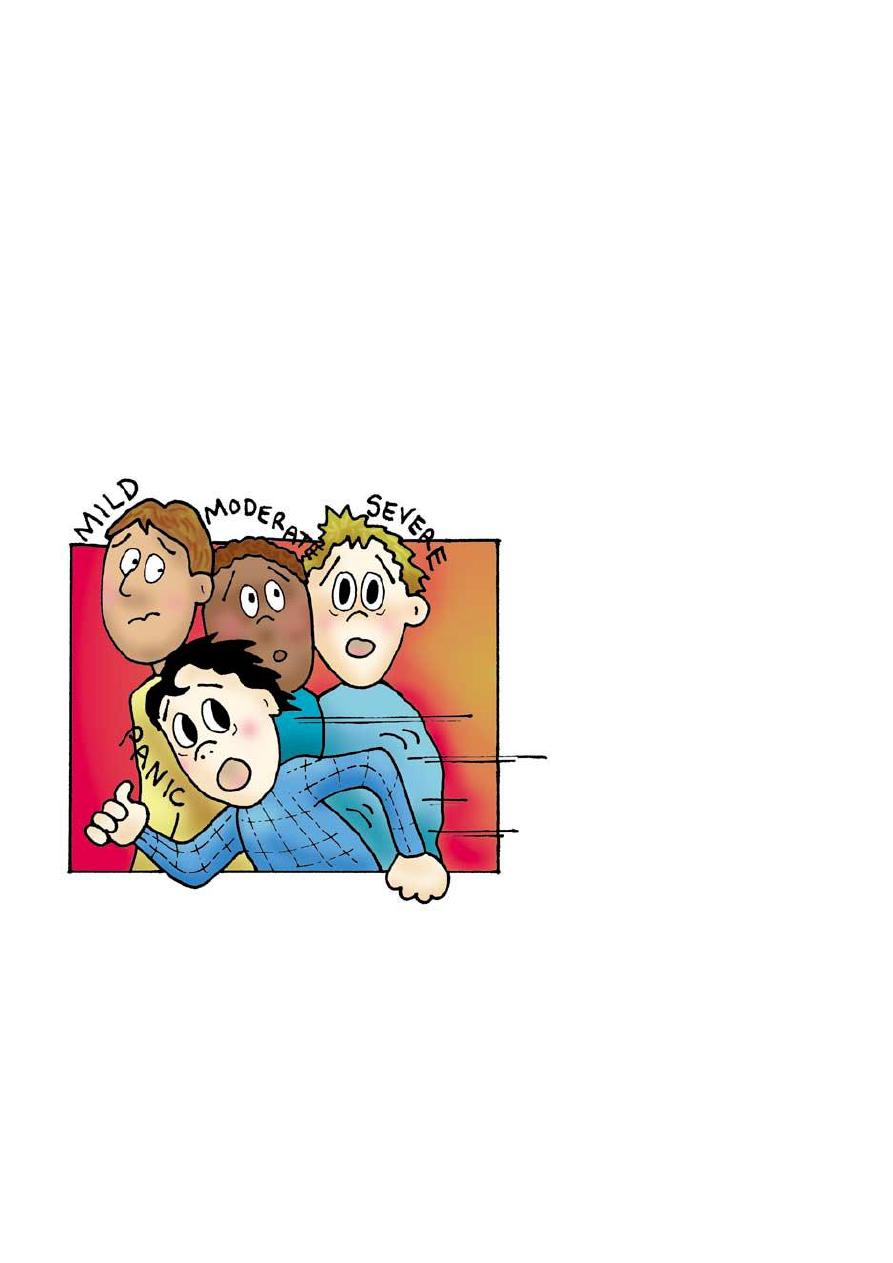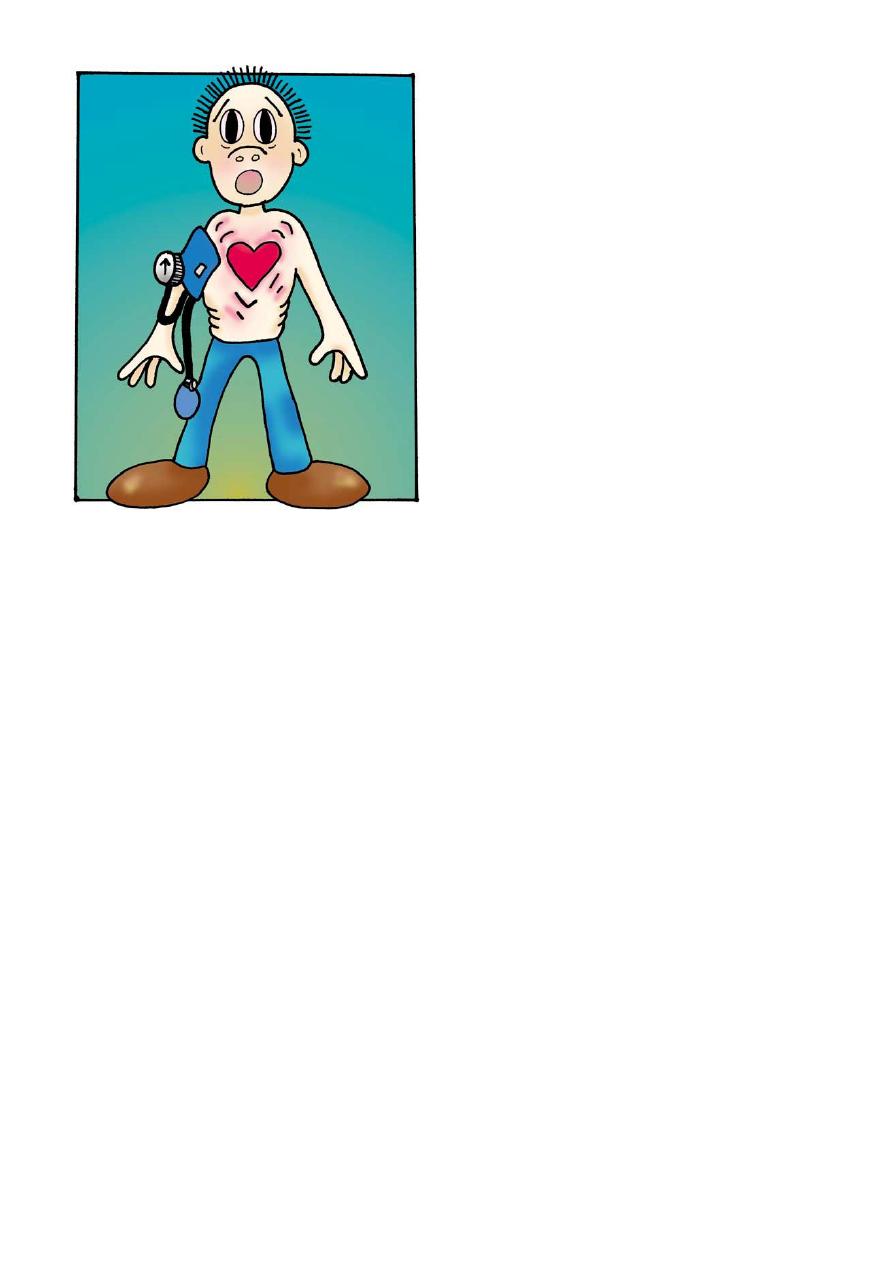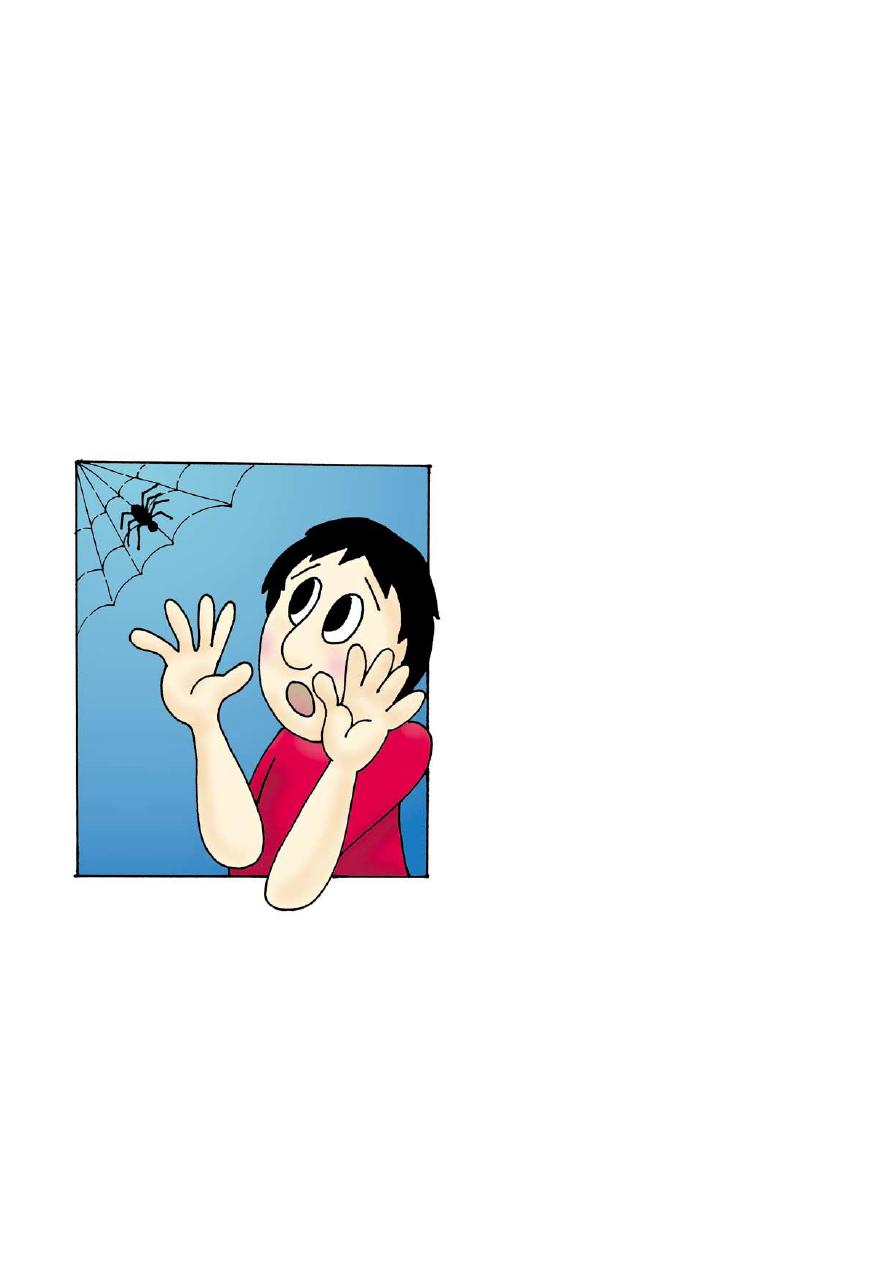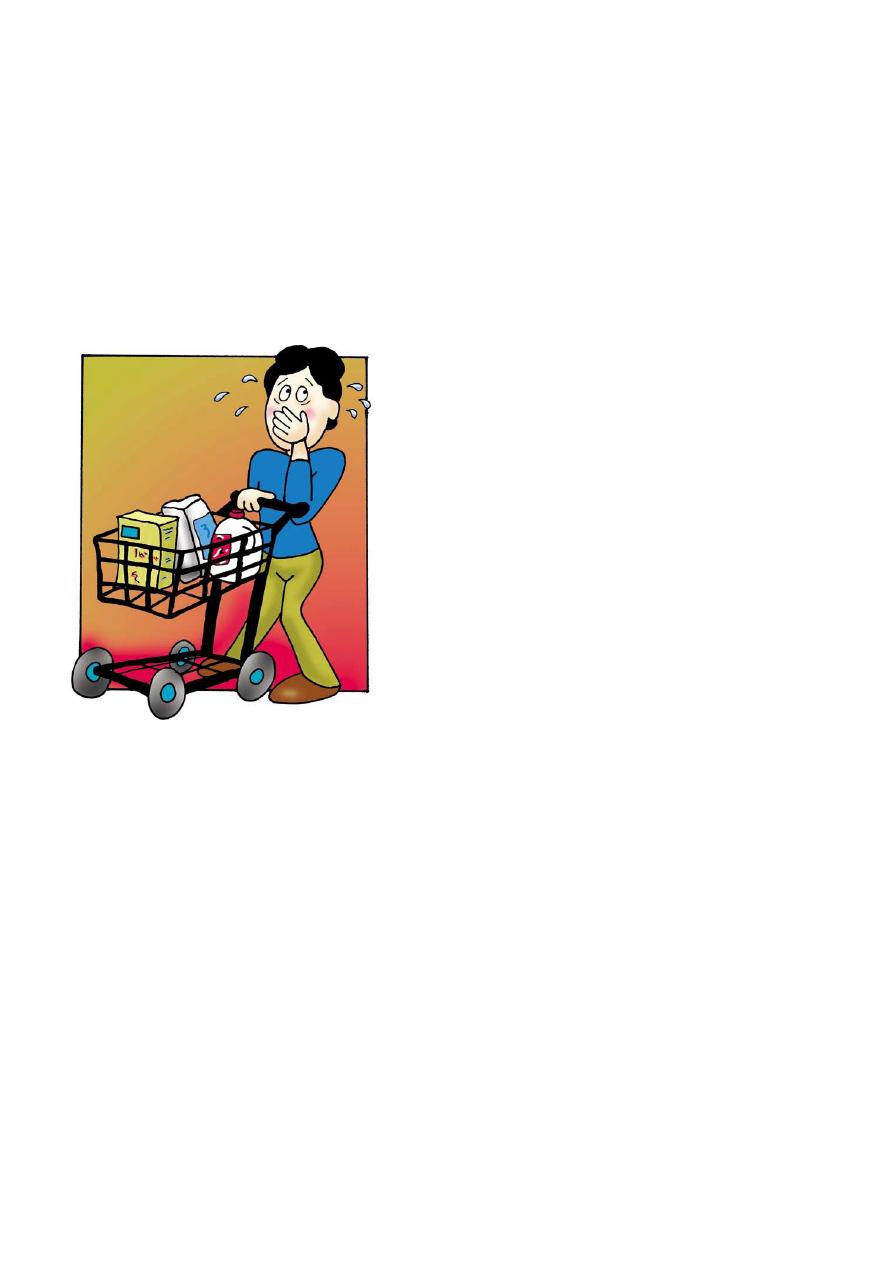
1
ANXIETY DISORDERS
They are among the most prevalent psychiatric disorders with life time
prevalence of 25%.
Anxiety is a vague feeling of dread or apprehension;it is a response to external or
internal stimuli that can have behavioral, emotional, cognitive, and physical
symptoms. Anxiety is distinguished from fear, which is feeling afraid or
threatened by a clearly identifiable, external stimulus that represents danger to
the person
It is an emotion (mood) dominated by unpleasant feeling of anticipation of bad
events and worries about the future.
Anxiety as a symptom should be differentiated from anxiety disorders.
Low level of anxiety enhances motivation and performance, whereas high level
has the opposite effect.
Anxiety disorders are abnormal emotional state dominated by anxiety symptoms
that are distressing and interferes with everyday functioning. Anxiety symptoms
are mental (psychological) and physical.
Mental symptoms include restless anticipation and apprehension, irritability,
poor concentration, worrying thoughts, raised arousal, sleep disturbance
(insomnia, nightmares), obsessions, depression, derealisation, and intolerance to
external stimulation.
Physical symptoms are diffuse and may involve any system in the body.

2
Gastrointestinal symptoms include dry mouth, epigastric discomfort, difficulty of
swallowing, and diarrhoea.
Respiratory symptoms include tightness in the chest, choking, and
overbreathing.
Cardiovascular symptoms include palpitation, rapid pulse, and discomfort or
pain in the chest.
Genitourinary symptoms include impotence, menstrual disturbance or
amenorrhoea, and frequent and urgent micturition.
Neuromuscular symptoms include tremor, muscle tension, thumping or tightness
headache, vague sensations, tinnitus and dizziness, depersonalisation, and
physical restlessness (fidgeting, pacing).
In addition to its effects on other systems, autonomic nervous system
overactivity results in pale skin and excessive sweating, particularly of the hands,
feet, and axilla,chills or hot flashes. Sleep disturbance presents as initial insomnia
(difficult falling asleep), interrupted sleep, and disturbing dreams. Sleep is not
refreshing and the patient wakes up feeling tired. Anxiety disorders include
generalised anxiety disorder (GAD), phobic anxiety disorders (PAD), obsessive-
compulsive disorders (OCD), acute stress disorders (ASD), panic disorders (PD),
and post-traumatic stress disorders (PTSD).
GENERALISED ANXIETY DISORDER: The psychological and physical
symptoms of anxiety are diffuse, intense, persistent, and not restricted to

3
particular situations, circumstances, or obsessions. Depressive symptoms, when
present, are not prominent. For the diagnosis of GAD both ICD 10 and DSM1V
require the same constellation of symptoms but differ in their duration. ICD 10
requires that symptoms are present for periods of several weeks or usually for
several months, whereas the duration in DSM1V is six months. Symptoms of
anxiety may be present in most psychiatric disorders. Coexistence of symptoms
of anxiety and depression is common (co-morbidity) and the choice of a primary
diagnosis depends on which symptoms appeared first and are more severe.
Agitated depression is associated with mental and physical restlessness and
maybe mistaken for GAD. Depressive thinking, self-blame, guilt feelings and
suicidal preoccupation are features of severe depression and not of GAD.
Schizophrenia, particularly in young patients, may be associated with symptoms
of anxiety and the clinician should enquire about psychotic features. Dementia
may present with symptoms of anxiety, but assessment of cognitive functions
settles the diagnosis. Alcohol and drug dependence, particularly during
withdrawal, is associated with symptoms of anxiety. Physical illnesses associated
with mental and physical symptoms of anxiety include thyrotoxicosis,
hypoglycaemia, cardiorespiratory (arrythmias, hypertension, hypoxia, asthma)
diseases, and pheochromocytoma. These diseases are excluded by clinical
examination and laboratory tests. The aetiology of GAD is not well
understood.Genetic,neurotransmitters disturbances and environmental factors
have a role in aetiology. Psychoanalytic theories postulate that GAD is the result
of intrapsychic conflicts between the ego on the one hand, and the environment
and instincts (id) on the other. Normally, undesirable and unpleasant emotions
and impulses are repressed. Failure of repression threatens the ego and becomes
stressful. Threatening stressful events (actual or anticipated), particularly in
childhood, acting on a predisposed personality may be the cause of GAD.
Conditioning theories propose that in a predisposed personality, fearful stimuli
become generalised and normally neutral stimuli become threatening and
generate anxiety. Cognitive theories suggest that anxiety is perpetuated by
preoccupation with worrying thoughts and negative interpretation of information
and events (negative thinking.). The three sets of theories are also postulated for
the aetiology phobic anxiety disorders. Prognosis of GAD is variable and mild
disorders may improve within months, whereas severe ones may last for years.
Attribution of symptoms by the patient to a physical illness worsens the
prognosis. Management of GAD involves re-assurance and support, explanation
of the relationship between psychological and physical symptoms, relaxation
exercises, and correction of negative thinking. Stimulants like nicotine (cigarettes
smoking) and caffeine (tea, coffee, cola drinks) should be avoided. The use of
alcohol to deal with the symptoms may lead to dependence and should be
avoided. Prescribed drugs are used with other treatment measures.

4
Benzodiazepines and azaspirones should be used in smallest effective doses and
for 2-6 weeks courses to avoid the development of dependence. Longer half-life
benzodiazepines (diazepam or chlordiazopoxide) are preferred because
withdrawal from these drugs is smoother and less symptomatic. Some tricyclic
antidepressants, because of their dual antidepressant and anxiolytic action, are
also effective. Monoamine oxidase inhibitors are effective, but their use is
limited because of drug-interaction and dietary restriction (foodstuff containing
tyramine like cheese, pulses).Antipsychotics and SSRI in small dose may be
effective in some cases(stelazine 1 mg TID or fluxitine 20mg once daily). Beta-
adrenergic antagonists (beta-blockers) reduce the physical symptoms of
autonomic nervous system overctivity and have a limited role in treatment of
GAD.
PHOBIC ANXIETY DISORDERS (PAD):
Phobia is an inappropriate or disproportionate experience of symptoms of
anxiety in the presence of a particular object or in a particular situation or event
and leads to avoidance.
It is inappropriate because most people will not experience anxiety, and
disproportionate because anxiety is excessive compared to the danger involved.
The patient is aware that his reaction is inappropriate or disproportionate.
Symptoms may appear in advance of exposure (anticipatory anxiety).
Anxiety provoking objects, situations or events that do not lead to avoidance are
not phobias. In addition to symptoms of anxiety, there may be depressive

5
symptoms, obsessions, depersonalisation, panic attacks, impending fainting, and
loss of control.
ICD-10 and DSM1V classify phobic disorders to simple phobia, social phobia,
and agoraphobia. In simple phobia, a specific object (spider, snake, hoarse) or
situation (flying, dental treatment, darkness) provokes symptoms of anxiety. The
object or situation may represent some risk to most people, but the reaction to
that risk is excessive (disproportionate).
Anxiety about having an illness may be expressed as phobia, hypochondriasis,
or obsession.
Phobia is associated with avoidance; hypochondriasis is associated with
conviction of being ill; and obsession is associated with resistance and non-
acceptance.
Simple phobias are common in childhood and usually improve with increasing
age.
History may reveal exposure to a stressful experience related to the phobia.
Social phobia is related to situations where the person feels being observed and
may be criticised by other people.
Such situations include public places (restaurants, cinemas), classes, meetings,
and parties. The person either avoids these situations or chooses to sit in
relatively excluded place.
Social phobia may be restricted to specific activities (eating, public speaking,
playing musical instrument) this called performance anxiety or to the presence of
other people (discrete social phobia). Social phobias affect both sexes ,it is more
common in females, and more often occur between 17 and 30 years of age. The
differential diagnosis of social phobia includes agoraphobia, panic disorder,
GAD, depression. Schizophrenic patient feels being watched and avoids other
people because of persecutory delusions, whereas phobic patient acknowledges
that thoughts of being watched are untrue.
Agoraphobia is a situational phobia where symptoms usually occur in crowded
places (busses, open spaces, markets, cinemas) with feeling of being trapped,
losing control, and help is not available.
The additional symptoms of panic, loss of control, and impending fainting, are
more frequent in agoraphobia than in other phobic disorders.
Avoidance and anticipatory anxiety restrict mobility, and in severe cases, the
patient becomes housebound (housebound housewife syndrome although it
occurs in both sexes). Agoraphobia is more common in females. The onset is
sudden and commonly ushered by panic symptoms and without an apparent
triggering event.
It starts outside the home with intense anxiety, palpitation, feeling of
helplessness, and impending faint. Repetition and anticipation of these attacks
leads to avoidance. In the presence of a companion, symptoms are less intense

6
and the patient is able to cope and engage in social activities. The patient feels
more confident and safer even when the companion is unable to help (child, dog).
One study reported high incidence of mitral valve prolapse in women with
agoraphobia.
Most symptoms of agoraphobia, GAD, and social phobia overlap for differential
diagnosis.
Detailed history about the sequence and set of the symptoms and the patient’s
reaction and behaviour are helpful.
Agoraphobia may occur in depressive illness and vice versa, and the diagnosis
will depend on which of the two disorders has developed first.
Paranoid patients may avoid social activities and crowded places, but this occurs
in set up of persecutory delusions.
Cognitive behaviour therapy combined with deconditioning to the phobia-
provoking situation offers the best option of treatment.
This involves replacing worrying thoughts with pleasant ones (negative thinking
to positive thinking) and interpretation of symptoms as a physiological response
rather than an illness.
Gradual exposure to the phobia-provoking situation coupled with support,
reassurance, and relaxation training is essential. Drug treatment is similar to
GAD, bearing in mind that tricyclic antidepressants, particularly imipramine, are
effective to control panic attacks. Panic attacks also respond to the anxiolytic
alprozalam.
PANIC DISORDER (PD) is characterised by the occurrence of frequent panic
attacks as a primary symptom. The cluster of symptoms in a panic attack is the
physical manifestations of GAD plus fear of dying, of going mad, and doing
something uncontrolled. At least four symptoms should be present with or
without agoraphobia (DSM1V), but ICD-10 exclude marked agoraphobia. Severe
anxiety builds up quickly(peak within 10 minutes) and unexpectedly and is
associated with fear of a catastrophic outcome. Some patients may hyperventilate
leading to alkalosis and worsening of the symptoms. Panic attacks may occur in
GAD, and phobic and depressive disorders. Three hypotheses are proposed for
the aetiology of panic disorders. The biochemical hypothesis is based on the
observations that panic attacks can be provoked by intravenous injection of
sodium lactate and yohimbine in the sufferer but not in healthy individuals, panic
attacks can be reduced by drugs, and the disorder runs in families. The
hyperventilation hypothesis is based on the similarity of symptoms of
hyperventilation and panic attacks and suggests that involuntary hyperventilation
is the cause of spontaneous panic attacks. Inhalation of carbon dioxide provokes
panic attacks more readily in patients than in control, suggesting hypersensitive
respiratory chemoreceptors. The cognitive hypothesis relates panic attacks to

7
worries about mental and physical health provoked by anxiety symptoms. Panic
attacks respond to benzodiazepines, particularly alprozalam, and tricyclic
antidepressants, particularly imipramine and clomipramine. Relapse rate is lower
if the treatment continues for longer than six months. Antidepressants’ treatment
may initially worsen the symptoms (tachycardia, palpitation) and a gradual build
up of the dose is preferable. Fluvoxamine and fluxitine(SSRI) are reported to be
helpful. Training to control hyperventilation voluntarily or by re-breathing from a
bag reduces the symptom s and establishes to the patient that the symptoms are
benign. Cognitive therapy helps to demonstrate to the patient the connection
between worrying thoughts and the physiological response (physical symptoms).
OBSESSIVE-COMPULSIVE DISORDER: Obsessions and compulsions are
common, but as long as they are not severe enough to interfere with everyday
activities, they are symptoms and not disorders. Obsessions may present as
words, ideas, and phrases (obsessional thoughts), as images (obsessional
images), or as debate and arguments with one’s own self (obsessional
ruminations). Obsessions are unpleasant, intrude forcibly into the mind, alien
to personal beliefs, and considered irrational and resisted by the person. The
person is aware that the obsessions are coming from within him and not
imposed on him by others (not thought insertion). The content of the
obsessions may be aggressive (fear of harming others), obscene, sexual,
blasphemous, and swears. Compulsions are urges to perform acts that are
unnecessary, undesirable, could be dangerous, and considered irrational and
resisted by the person (compulsive impulses). Compulsions may present as
repetitive activities as checking and rechecking and doing things in a specific
order (compulsive rituals). Compulsive rituals may involve speech (repeating

8
words or phrases in a special sequence and for a number of times) or
behaviour (walking, dressing, or eating in a specific way). Obsessional doubts
and superstitions is the driving force that leads to compulsive rituals. Acts like
repeated hand washing, and checking and rechecking are performed because
of doubts that the result is not satisfactory. The person is aware that he has
done the required act and the repetition is irrational. Compulsive rituals may
involve arranging articles (furniture, clothes) in a specific sequence and
pattern without a rational reason. Obsessions and compulsions may worsen in
certain situations that have some connection to their contents (fear of harming
others when knives are available, fear of contamination in hospitals). This may
lead to avoidance (obsessional phobia). Symptoms of anxiety and distress
dominate the clinical picture of obsessive-compulsive disorder, and
performance of compulsive acts and rituals may temporarily reduce the level
of anxiety. Obsessive-compulsive symptoms may occur in other psychiatric
disorders. Other symptoms include depression and depersonalisation.
Obsessive-compulsive disorder may occur in any type of personality, but more
often in obsessive-compulsive personality. Differential diagnosis includes
other anxiety disorders, depressive disorder, and rarely schizophrenia.
Obsessive-compulsive symptoms or disorder may follow head injury and
encephalitis. The aetiology of obsessive compulsive disorder is unknown and
the following hypotheses are proposed; psychoanalytic, learning, genetic, and
abnormal seratonergic function. The psychoanalytic theories suggest that
obsessions be caused by unacceptable aggressive and sexual impulses that
cause anxiety, and are counteracted by repression and reaction formation.
Regression to the anal stage of psychosexual development reflects the
person’s preoccupation with contamination and cleanliness. The other
hypotheses are self-explanatory. Symptoms of obsessive-compulsive disorder
fluctuate in severity and there may be periods of spontaneous remission.
Prognosis is worse in severe cases and in patients with obsessive-compulsive
personality. Stressful life style worsens the symptoms whereas predictable
organised living improves the symptoms. Drugs, which inhibit serotonin re-
uptake and increase the level of serotonin at the receptors (clomipramine,
fluoxetine, fluvoxamine) improve the symptoms. Treatment should continue
for six months or longer and early withdrawal of drugs may precipitate
relapse. Compulsive rituals may improve with behaviour therapy using
response prevention and exposure to environmental cues. Psychosurgery
should be reserved for intractable cases after other treatments had failed.
Support, re-assurance, and removal of stressful factors are helpful.
END



